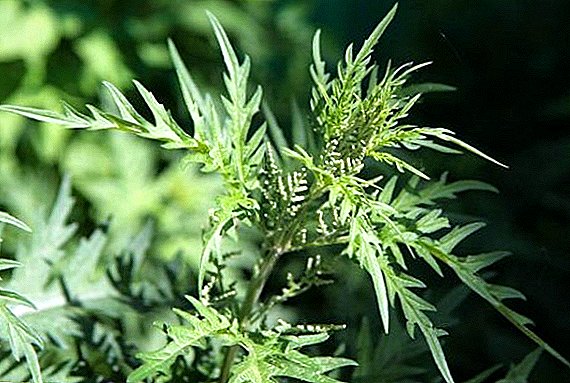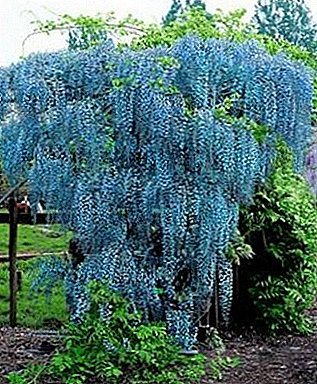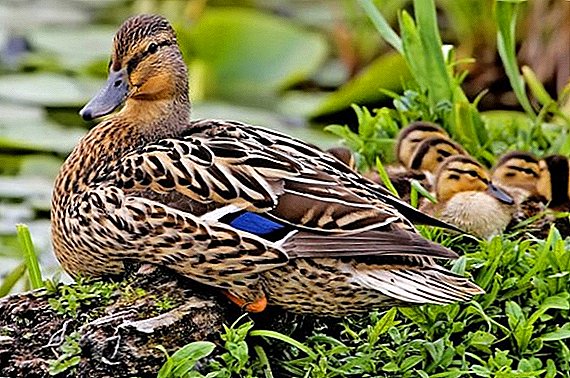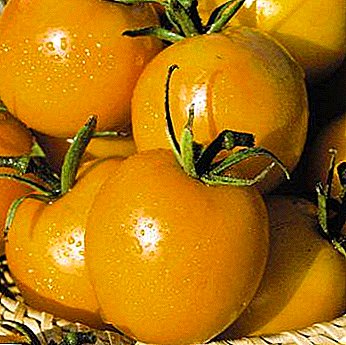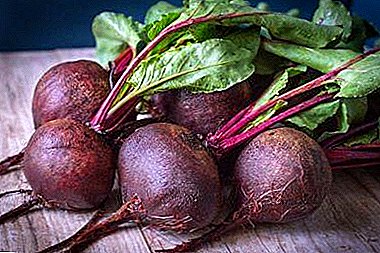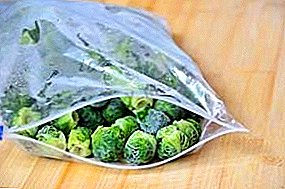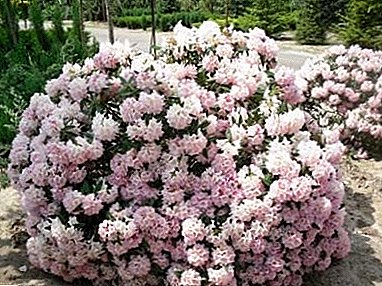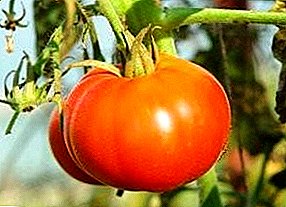
During the long years of its existence, the variety of tomato Siberian early maturing could well establish itself among gardeners.
It was bred by the breeders of the Russian Federation in 1959. The tomato variety Siberian early ripening was obtained by crossing the varieties of the Hybrid 114 with the Hybrid 534/1, after which an individual selection was carried out.
A full description of the variety, its characteristics and cultivation features can be found in the article below.
Siberian tomato early: description of the variety
| Grade name | Siberian early |
| general description | Early ripe determinant variety |
| Originator | Russia |
| Ripening | 115-130 days |
| The form | Flat-round low ribbed |
| Colour | Red |
| Average tomato mass | 60-110 grams |
| Application | Universal |
| Yield varieties | 9-10 kg per square meter |
| Features of growing | Agrotechnika standard |
| Disease resistance | Prevention of certain diseases is required. |
 By type of growth of the bush, this species belongs to the determinant varieties of tomatoes. The height of its bushes can be from thirty to ninety four centimeters. The stem is characterized by strong foliage. The leaves are medium in size and green or dark green in color. Stamb does not form.
By type of growth of the bush, this species belongs to the determinant varieties of tomatoes. The height of its bushes can be from thirty to ninety four centimeters. The stem is characterized by strong foliage. The leaves are medium in size and green or dark green in color. Stamb does not form.
Siberian early ripening is usually attributed to the early ripening varieties, since it takes from one hundred and fifteen to one hundred and thirty days from the appearance of the first seedlings to the ripening of fruits. It is resistant to brown spot and tobacco mosaic virus, and to other diseases, it shows moderate resistance. Tomatoes of this variety can be grown both in the greenhouse and in the open field.
The main advantages of tomato varieties Siberian early can be called:
- Good yield;
- Cold resistance;
- Universality of fruit in use;
- Unpretentiousness;
- Long period of fruiting;
- Resistance to certain diseases.
The disadvantages of "Siberian precocious" growers call:
- Moral obsolescence.
- Inability to compete with modern hybrid varieties in many ways.
As you can see, these shortcomings are very subjective.
 Learn more about the most common tomato diseases in greenhouses here. We will also tell you about ways to deal with them.
Learn more about the most common tomato diseases in greenhouses here. We will also tell you about ways to deal with them.On our site you will find reliable information about such misfortunes as Alternaria, Fusarium, Verticillis, Phytophlorosis and ways to protect against Phytophthora.
Specifications
- The weight of tomatoes in this variety of tomatoes ranges from sixty to one hundred and ten grams.
- They have a flat-round or round slightly ribbed shape and bright red color.
- The number of cameras in one tomato can vary from five to twelve.
- The solids content in it is at the level of 7%.
- The fruits are characterized by a traditional tomato flavor and a pleasant aroma.
- They tolerate transportation.
You can compare the weight of different grades in the table below:
| Grade name | Fruit weight |
| Siberian early | 60-110 grams |
| Nastya | 150-200 grams |
| Valentine | 80-90 grams |
| Garden Pearl | 15-20 grams |
| Domes of Siberia | 200-250 grams |
| Caspar | 80-120 grams |
| Frost | 50-200 grams |
| Blagovest F1 | 110-150 grams |
| Irina | 120 grams |
| Octopus F1 | 150 grams |
| Dubrava | 60-105 grams |
You can store the collected tomatoes in boxes, putting them in dense rows so that their stalks are located on top. Tomatoes selected for storage should not be wet! The box must be closed with a light pressure cover. In such conditions, fruits can be stored for up to two months.
By the way of use this type of tomato is considered universal.. It is used in its raw form, and also used to make juices, mashed potatoes, pastes and sauces. These tomatoes are suitable for salting. When grown in greenhouse conditions, each bush of this variety is usually harvested from one to one and a half pounds of fruit, and the average yield is nine to ten pounds of fruit per square meter of planting.
When grown in the open ground, from five to five hundred grams of fruits are harvested from one bush, and from six to seven kilograms of fruits from one square meter of planting.
Compare crop yield can be in the table below:
| Grade name | Yield |
| Siberian early | 9-10 sq.m. |
| Lazy man | 15 kg per square meter |
| Rocket | 6.5 kg per square meter |
| Summer resident | 4 kg from a bush |
| Prime minister | 6-9 kg per square meter |
| Doll | 8-9 kg per square meter |
| Stolypin | 8-9 kg per square meter |
| Broody | 10-11 kg per square meter |
| Black bunch | 6 kg from a bush |
| Fat jack | 5-6 kg from a bush |
| Buyan | 9 kg from a bush |
A photo
Next, you will see photos of a variety of tomato "Siberian early":




Care and cultivation
Tomato Siberian early ripening is suitable for cultivation in all regions of Russia, except for the Volga region, the Central Black Soil Region and the North Caucasus District. The main feature of this time-tested variety of tomatoes is the simultaneous ripening of fruits.
Tomatoes of this variety almost never crack. When grown in greenhouses, pre-hardened and treated seeds should be planted in late March or early April. The depth of planting seeds should be at least one centimeter. All further care is regular watering and feeding. When at least two leaves appear on the shoots, they dive.
In a greenhouse, bushes usually grow up to sixty to ninety centimeters in height, so they need a garter to a vertical support. In the open ground seedlings are planted in late May or early June. Best of all, the plants will feel in light, slightly acidic soil, which will be slightly moist.
The distance between the bushes should be at least fifty centimeters, and the distance between the rows can vary from twenty-five to thirty-five centimeters. Plants need to form in three stalks. Caring for tomatoes is to maintain the low humidity of the atmosphere, watering with warm water after sunset, regular fertilization and loosening the soil.
Diseases and pests
The Siberian early-ripe tomato is little susceptible to the diseases of tomatoes in greenhouses, and it exhibits high resistance to the tobacco mosaic virus and brown spot. However, when growing it, you run the risk of encountering such diseases:
- Late blight, which can be eliminated by special fungicidal preparations or 10% saline solution;
- Gray rot, which can be cured with fungicides and triazole preparations;
- Fusarium and Alternaria, which will save the treatment of fungicidal drugs;
- The main pests of tomatoes are the bear, wireworm, whitefly, aphid and nematode. To combat them, there are many insecticidal drugs.
Conclusion
Despite certain shortcomings, the Siberian early tomato is still one of the most popular varieties.
| Early maturing | Middle late | Medium early |
| Garden Pearl | gold fish | Um Champion |
| Hurricane | Raspberry wonder | Sultan |
| Red Red | Miracle of the market | Dream lazy |
| Volgograd Pink | De barao black | New Transnistria |
| Helena | De Barao Orange | Giant Red |
| May Rose | De Barao Red | Russian soul |
| Super prize | Honey salute | Pullet |


